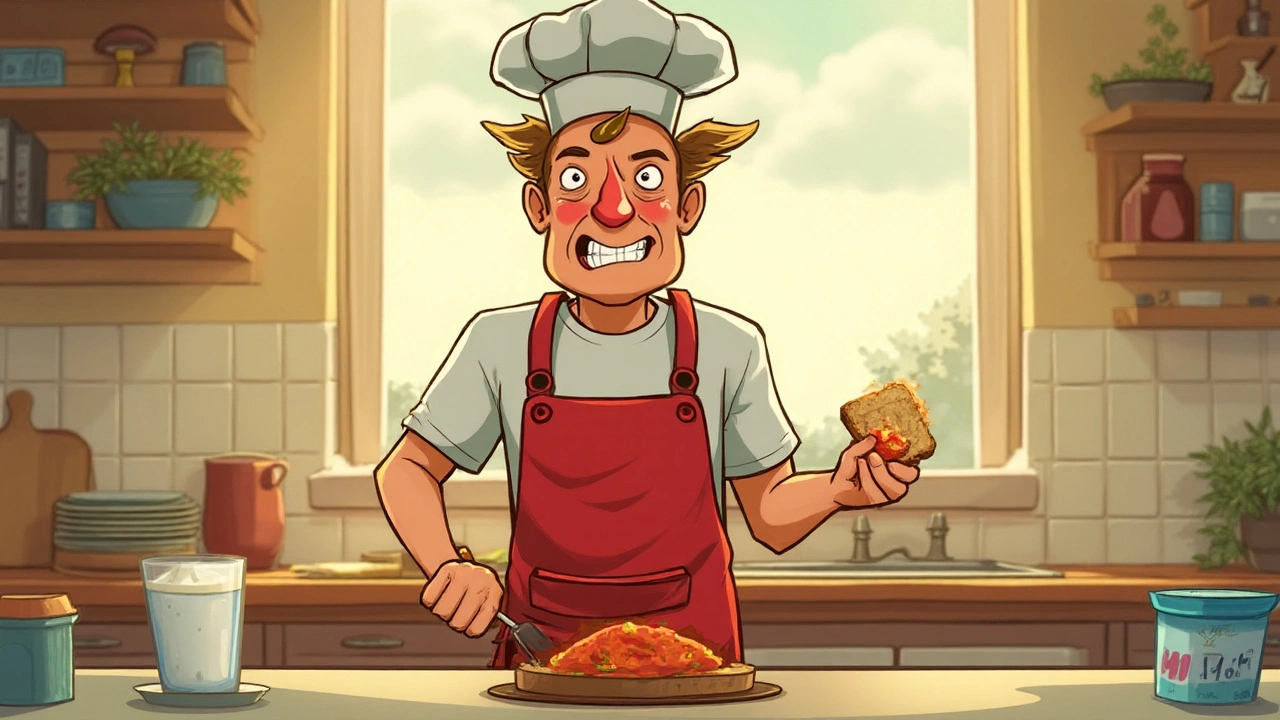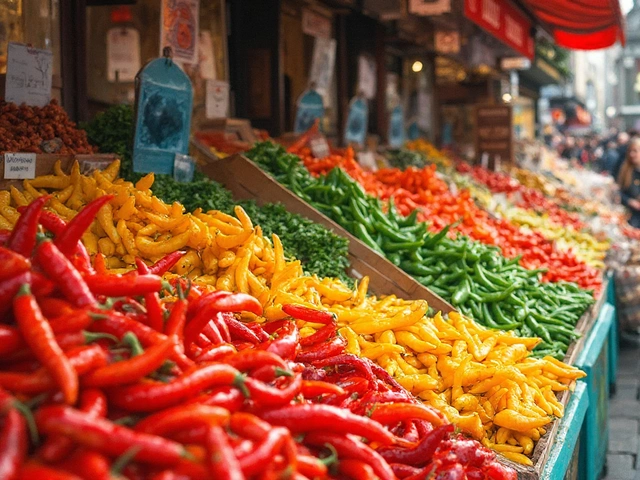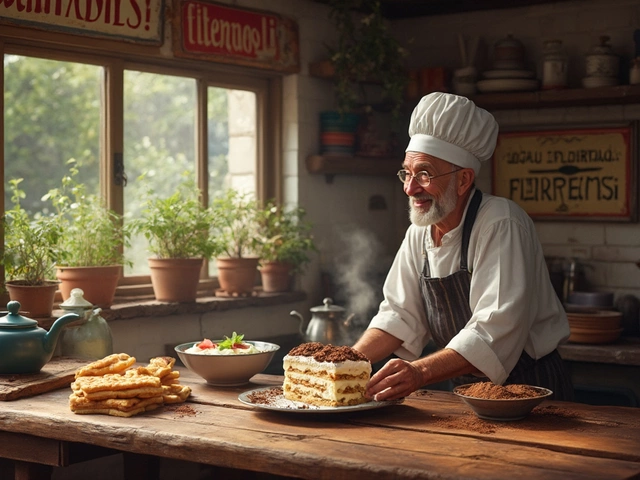
Who really rules the realm of spicy? Is it the feisty ghost pepper from India, the jaw-dropping Carolina Reaper from the Carolinas, or some dark horse waiting to torch tastebuds worldwide? People go nuts over spicy food controversies—some swear by ancient Nagas, others crave hot sauces that make you sign a waiver. The king of spicy isn’t just a title, it’s a battleground. If you’ve ever seen someone try a bite of the world's hottest pepper and then question their life choices, you know the drama’s real. But there’s more to this story than just red faces and tears—it's about biology, history, competition, and why people love the burn in the first place.
The Science and Showdown: Spicy’s Fiercest Contenders
Cold water, bread, milk—everyone has a spicy food survival tip. But how hot does it really get? Let’s break out the big guns: the Scoville scale. Wilbur Scoville, a pharmacist from Connecticut, dreamed this up in 1912 to measure chili heat based on capsaicin. Forget lame hot sauces at your local pizza shop—serious contenders like the Carolina Reaper, Trinidad Moruga Scorpion, and Ghost Pepper fill the air with danger. These guys make jalapeños taste like cucumbers by comparison.
The king of spicy right now (officially) is the Carolina Reaper, with a mind-blowing average of 1.6 million Scoville Heat Units (SHU) and some samples cranking past 2.2 million. Ed Currie, the man behind the madness at PuckerButt Pepper Company, engineered the Reaper by crossing a Pakistani Naga with a Red Habanero. Don’t believe the hype? The Guinness World Records gave it the crown in 2013, and nobody has dethroned it yet. But the war isn’t over. The Pepper X, by the same Ed Currie, claims even higher SHU—topping at 3.18 million—but it’s still chasing that Guinness seal.
Here’s a snapshot to put things in perspective:
| Pepper Name | Origin | Average SHU | Notable Fact |
|---|---|---|---|
| Carolina Reaper | USA | 1,641,183 | Holds Guinness World Record since 2013 |
| Pepper X | USA | 2,693,000 | Unofficial—Guinness review pending |
| Trinidad Moruga Scorpion | Trinidad & Tobago | 1,200,000 | First to crack 2 million SHU in testing |
| 7 Pot Douglah | Trinidad | 1,854,000 | Named for its ability to spice seven pots |
| Ghost Pepper (Bhut Jolokia) | India | 1,041,427 | Held record until 2011 |
| Habanero | Mexico | 100,000–350,000 | Once considered the hottest |
| Jalapeño | Mexico | 3,500–8,000 | Mild by today’s standards |
The rivalry is intense—claims fly in hot pepper circles about mutant crosses and experimental grows. But it’s not just about raw numbers. Some peppers have flavor; some just burn.

Beneath the Burn: Why We Love (and Fear) Spicy
Why would anyone crave this kind of pain? It all comes down to capsaicin, the active chemical. Capsaicin tricks your body into thinking you're on fire, causing your brain to set off the alarm: sweating, endorphins, snot—sometimes even euphoria. Adventure-seekers chase that "spicy rush" just like some crave roller coasters. There’s even talk of a genetic quirk—some of us taste heat differently, thanks to variations in our TRPV1 receptors. Got a friend who mops up ghost pepper sauce without blinking? Blame their DNA.
It’s not just about bragging rights, either. Spicy food is packed with legit health bonuses. A 2015 BMJ study found that people who eat hot peppers daily may have a 14% lower risk of death. Capsaicin boosts metabolism, lowers blood pressure, and might even fight inflammation. So, the burn comes with benefits—but don’t go chasing world records on an empty stomach. Eating ultra-hot peppers can backfire: severe stomach cramps, vomiting, even hospital visits if you aren’t careful. Remember that viral “Reaper Challenge” guy who ended up in the ER with thunderclap headaches? Legendary, but a warning sign too.
Every culture adds its own twist to spicy. In Szechuan cuisine, the heat is so layered with flavor that people get hooked on the addictive combo of pain and pleasure. Mexico, India, Korea, Ethiopia—the list goes on. Look up Tingmo from Tibet or Sichuan hot pot if you want your mind (and tongue) blown for something different.

Tips, Tricks, and Hot Pepper Myths: Surviving When It’s Too Hot
So, what if you bite off more than you can chew? Maybe your hot wings aren’t testing the Reaper, but the burn gets brutal fast. Forget water—it spreads capsaicin around and can make things worse. Dairy is your best friend. Whole milk, yogurt, or even ice cream work because their fats dissolve capsaicin, while casein (a milk protein) binds to it and drags it away. Cue that glass of cold milk before it’s too late.
- Bread can help in a pinch by soaking it up. Rice is a staple rescue in Asian spicy dishes.
- Sugar can offer relief—try a spoonful of honey, or eat a piece of chocolate if you’re desperate.
- Avoid carbonated drinks; the fizz can spread the heat and amp up the pain.
What about building your spice tolerance? Go slow. Start with mild salsa and work up to hotter stuff. Mixing small amounts of chili powder into regular meals helps your tastebuds adapt. Some hot sauce addicts keep raw jalapeños handy, using thin slices like flavor bombs until what used to burn now tastes sweet.
Of course, there are wild myths out there. “Hot peppers cause ulcers”—nope, they might actually help by killing bacteria. “White seeds are the hottest part”—wrong, it’s actually the pith and veins where capsaicin pools. And yes, wear gloves if you’re cutting up anything hotter than a habanero, unless you want your fingers to burn for a day. If you do go bare-handed, use oil or dish soap before water to scrub away the capsaicin residue.
If you’re obsessed with the king of spicy, you can grow your own superhots at home. Carolina Reaper seeds are legal in most places—and seeing that gnarly red pod on your windowsill turns you into the neighborhood legend. Just remember, different climates can boost or tame the heat, so the Carolina Reaper out of South Carolina might show the ghost pepper from Assam who’s boss, but a backyard ghost pepper in chilly London could be underwhelming. It’s all about sun, soil, and that secret gardener’s touch.
Next time you sit down to a bowl of chili or a plate of Szechuan noodles, take a second to appreciate the effort it took to crown the world’s king of spicy. None of it’s by accident—nature, science, and a global fan club brought these nuclear peppers into your life. And who knows? Maybe the next king is growing in someone’s backyard right now, about to burn the whole record book to ashes.








Write a comment